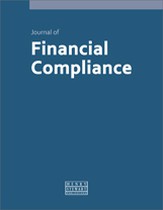Sustainable integration of frontier AI in banking: A framework for emissions accounting and regulatory alignment
Abstract
This paper examines the integration of advanced (‘Frontier’) artificial intelligence’s (AI) carbon footprint into the risk management frameworks (RMFs) of the banking sector, emphasising its importance in aligning with net zero goals and regulatory requirements. As AI becomes increasingly central to banking operations, its energy-intensive processes contribute significantly to carbon emissions, posing environmental, regulatory and reputational risks. Regulatory frameworks such as the EU AI Act, Corporate Sustainability Reporting Directive (CSRD), Corporate Sustainability Due Diligence Directive (CSDDD) and the Prudential Regulation Authority’s SS1/23 are driving banks to incorporate environmental considerations into their AI model governance. Recent advancements in AI research, such as the open mixture-of-experts (OLMoE) framework and the agentic retrieval-augmented generation (RAG) framework, offered more efficient and dynamic AI models, reducing their carbon footprint without compromising performance. Using these technological examples, this paper outlines a structured approach for banks to identify, assess and mitigate AI’s carbon footprint within their RMFs, including adopting energy-efficient models, utilising green cloud computing and implementing life cycle management. This paper also emphasises the importance of cross-departmental collaboration within banks and the use of respective enabling tools such as the greenhouse gas (GHG) Protocol Toolkit for carbon accounting and Fairlearn for AI fairness assessment. Building on the experts’ opinions, such as United Nations Environment Programme - Finance Initiative (UNEP FI), this paper argues that targeting alignment with global standards and directives such as the International Financial Reporting Standards (IFRS), the European Sustainability Reporting Standards (ESRS) and the Glasgow Financial Alliance for Net Zero (GFANZ), banks can enhance their sustainability reporting and model governance, ensuring long-term resilience. By effectively integrating these practices into their RMFs, banks can proactively navigate the regulatory landscape, mitigate environmental risks and promote a sustainable future in banking, balancing innovation with environmental responsibility. This article is included in The Business and Management Collection (https://hstalks.com/business/).
The full article is available to subscribers to the journal.
Author's Biography
Nataliya Tkachenko is an environmental computer scientist specialising in multimodal artificial intelligence (AI), with a focus on applications for sustainable finance. She earned her BSc degree in environmental sciences (genetics major) from Kyiv National University in 2007, an MSc degree in Earth Observation from AgroParisTech in 2009 and her PhD degree in multimodal AI for flood monitoring at the University of Warwick in 2018. She completed postdoctoral research in sustainable finance at the University of Oxford (2019-2023). Currently, she leads the Generative AI Sustainability Programme at the AI Centre of Excellence of Lloyds Banking Group, UK, where she oversees the responsible deployment and targeted applications of generative AI models in green finance. She also conducts cutting-edge research on AI-driven financial fraud and ‘greenwashing’ at the Judge Business School, University of Cambridge, as a visiting researcher. Beyond her professional roles, Tkachenko actively fosters public-private collaborations and acts as an Executive Director of the UK Multimodal AI Network, funded by Engineering and Physical Sciences Research Council (EPSRC).
